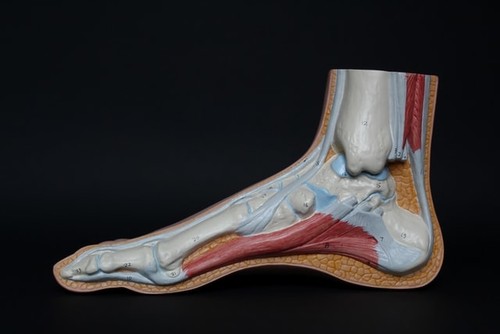Being specialized in specific training methods can really help you gain an advantage over the other trainers in the gym, and as I am sure you know, having an advantage is vital if you want to be successful as a personal trainer, especially in large commercial gyms.
There are tons of different training styles you can choose from, but the question is
“What are the best personal trainer specialties?”
In this article, I’ll be going through a bunch of the most popular and even not so popular niches, listing the pros, cons, and earning potential of each so you can decide which is best for you.
Sound good?
Let’s go….
The brass tacks of the situation with personal training specifications is, if you get it right, you can earn a fortune and be one of the most “in-demand” trainers in your gym. Get it wrong though, and you could spend hundreds or even thousands of pounds on training courses that might not gain you any clients, and potentially alienate you from members that might have wanted to train with you.
For example, if you spend all your time and effort dedicating your training style to powerlifting, but find out that no one in your gym wants or needs it, you could make members nervous about training with you, losing you tons of potential clients.
That’s why it’s so important to make sure you assess the environment in your gym first to see if your style of training has enough demand, or if you might need to change things up a bit and branch out.
You may be passionate about powerlifting, biomechanics, HIIT, or functional training, but the reality is, personal training is a business, so you may need to look at what style is going to be able to bring you consistent and reliable income.
As you’ll see, there are plenty of different areas of personal training, each has its benefits and drawbacks, so have a look and see what catches your eye.
Let’s look into some personal trainer specializations in detail so you can decide for yourself which route you want to go down.

Personal trainer specialties list
- Biomechanics
- Functional Training
- Core/stability Training
- Strength & Conditioning
- Obesity/GP Referral
- Pre & Postnatal
- Sports Specific
- Weight Loss Training
- Hypertrophy/Body sculpting
Biomechanics

What is it?
Biomechanics is a branch of personal training that focuses on very specific movement patterns and analysis of the human body. It is primarily used to improve the performance of sports players and athletes and prevent injury whilst strengthening and optimizing movement techniques in areas of the body used in their discipline.
Pros
The training and knowledge of the human anatomy displayed by trainers that have studied biomechanics can very quickly put them in the top category of trainers in the gym in terms of expertise.
As a result, you can justify charging a premium rate for your sessions. You will not be giving your clients a run-of-the-mill workout if they have either a very specific reason for training, such as sports specific or injury rehabilitation.
The knowledge required to properly assess and implement the training techniques used will be far beyond what most trainers in your gym will be able to offer, putting you at a distinct advantage for clients that require this training.
Cons
By its very nature, biomechanical training is very specific, this means that few people have even heard of it, understand its benefits, or will be actively seeking it out.
You might end up spending hundreds of pounds (or dollars) studying and getting certifications in biomechanics, only to find that you very rarely come across anyone that wants to make use of your skills.
It’ll look great on a PT profile board to you and the other trainers in a gym, but it would have very little impact on the members of a gym that have no idea what it means.
Is there earning potential?
Absolutely!
From the points I have outlined above you may think that training specifically in biomechanics is a dead end, but it’s far from that.
As I stated, because of the expert level of knowledge you will have, you will be able to charge significantly more for your private sessions.
The key to making money in this niche is to be certain that the area you are located in has a need for it. Do your due diligence and ensure that there are lots of sports grounds in your area or a high level of golf courses, tennis courts, or anywhere that may require technical training methods for athletes to improve their disciplines.
Functional Training

What is it?
Functional training is a method of using weight-based or bodyweight exercises to improve the functionality of everyday movements. For example, lifting heavy objects from the floor to waist height is an everyday activity that has the potential to cause injury. Functional training would utilize movements such as these to prepare the body for these movements, reducing the likelihood of injury occurring.
Functional training workouts make use of equipment such as sandbags, suspension kits, stability balls, and kettlebells. The idea is often to make use of the core of the body to increase your clients’ stability, and using multi-joint movements through several planes of motion ensures that no area of the body remains untrained.
Pros
Apart from giving a great “all-around” workout, functional training is a lot of fun to teach, and certain clients will really enjoy the sessions. It gives you a chance to teach how to use some of the more interesting pieces of equipment supplied by your gym and moves you away from old-fashioned movements like bench pressing and barbell squats.
There are many benefits, especially in inner cities where workers are typically sitting at a desk for the majority of the day. The movements have both muscle strengthening and stretching built into them. For example, walking kettlebell lunges with a core twist works the entire middle and lower body, whilst stretching the lower back and hip flexor muscles.
The result of this can mean that your client walks away feeling fresh and relaxed whilst also having used weight-bearing exercises which are very helpful to reach common goals such as weight loss.
A lot of members will be intimidated by the gym, and the sight of sweaty people grunting and shouting whilst they bench press and squat heavy weights are something they would never want to be a part of. For these clients, functional training is the perfect way to engage them, keep their interest, and allow them to reach their fitness goals without needing to feel uncomfortable.
Cons
Functional training is not for everyone, there is a limited market for it in most gyms and a lot of the members will not understand the benefits it can offer.
You may also find that it is hard to monitor progress which makes it hard to retain clients. For example, with a traditional weight-based program, you can clearly show the client the progression they have made with endurance, strength, and body composition after a few weeks/months.
With functional training, progress is harder to show, which may make the client feel as if they are not achieving much in their sessions and may be more likely to discontinue training with you.
There is also a higher chance of injury with these movements if not taught correctly, as there are typically many twisting movements involved. Combine twisting movements with unsteady surfaces such as stability balls or unbalanced equipment such as sandbags or heavy bags, and you will have to pay very close attention to ensure your client stays safe.
Is there earning potential?
There can be if there is a market for it in your area.
Remember, there are many people that do not understand the benefits of traditional weight training, and a very common objection I heard to it was that some people were worried about getting “too bulky”. Much as you may know as a trainer that this is unlikely, if you want to have a successful business as a personal trainer, you will need to make sure you are offering the opportunity to train as many people as possible.
Using functional training is an excellent way to teach people how to train with weight-bearing exercises that don’t require the use of intimidating equipment so that anyone can reap the rewards of weight-based training. You can also make these workouts far more interesting than the traditional training styles, which in some cases may help you to retain your clients for longer.
One final point is that functional training tends to appear fairly complicated to most gym-goers, as a result of this, they may shy away from equipment without the assistance of a trainer. This is a golden opportunity to offer to train them, as they will need your help to use the equipment that keeps them interested in working out.
Core/stability training

What is it?
Core strength and core stability are terms that are often used to describe specific training methods that target the mid-section of the body and specifically, to strengthen the shoulder and pelvic girdles creating a strong “internal corset”.
The reason this style of training has become so popular in recent years is that it has been shown to improve posture, which is a huge issue for many city workers with lower back pain. Many benefits can come from this style of training for these people.
However, it is also beneficial for almost any style of training, as every movement made originates from your deep core muscles. Without strength and stability in this area, the efficacy of every lift you complete is compromised, resulting in less efficient workouts, slower progress, and an increased risk of injury.
Pros
Almost everyone could benefit from increasing their core strength, from city workers with lower back pain to bodybuilders and powerlifters looking to improve their lifts.
As every movement begins with the core, there is no training method or style that cannot be helped with this type of training.
Core training is in essence very simple and usually needs little to no equipment, which can make it exceptionally easy to offer even during very busy periods of the day for gyms such as mornings and lunchtimes. The benefits are felt fairly quickly, and the relief from pain that clients feel once muscular imbalances are corrected can lead to many referrals and continued training.
Cons
Core stability training should not be used as a training method on its own but rather should be used to enrich traditional training regimes.
You can certainly add to your trainer bio that you are an expert in core strengthening/stability training (if you actually are of course), but I would not dedicate all of your time to learning about the core and neglecting other important aspects of training.
It could also be argued that specific core strengthening exercises are unnecessary if proper form is used within compound exercises such as deadlifts and squats. The exercises themselves require a great deal of core strength, so just by completing the lift, you are already strengthening the area.
Another major issue with core stability training is that the evidence of how effective it is, is as of yet, pretty sketchy. There has been little evidence that specifically training the core has an advantage over traditional methods. If clients are aware of this, they may not be willing to use your methods.
Is there earning potential?
Not on its own.
As part of a varied training regime, core stability exercises can be included, but they may not be strictly necessary, so it’s up to you.
In terms of whether or not you are more likely to make additional money from specific learning or even specializing in core stability training, I would say almost certainly not.
9/10 trainers in any gym will have core training certifications as part of their bio, as it’s a very common module in most personal training certification programs, so there is nothing unique about you adding it to yours.
Just my opinion of course, but I wouldn’t personally go down this route if you are looking for a decent income and a busy training schedule.
Strength & Conditioning

What is it?
Strength and conditioning training focuses on improving speed, strength, and power.
The main benefits are injury prevention, posture correction, increased metabolic rate, and of course, increased strength.
It is commonly used with sports professionals or amateurs that want to increase their sporting ability. Strength and conditioning certifications are not included within standard personal training courses, so they will need to be purchased and completed separately.
Pros
For athletes, improving their agility, speed, power, and strength can make the difference between playing a sport as a hobby or excelling as a professional.
Ensuring that an athlete can perform at their maximum without risking injury prevents the likelihood of an incident that could take them away from their profession for potentially months. This is why this style of training is so in demand for sports players of a certain caliber.
Being able to offer this style of training sets you apart from the run-of-the-mill trainers in a gym that offer more basic training programs. Specializing in any discipline allows you to greatly increase your session rates, which can make your training business far more profitable.
You may also like to work with more serious athletes, as you will rarely come across a sports professional that doesn’t listen to your advice. General clients that are looking to lose weight for example will not always take your advice into consideration, which can lead to poor results, which is very frustrating for a trainer.
Cons
Injury can always occur in any training program, but when you start adding elements like power, speed, and strength, you are mixing some of the most dangerous elements of training together.
Ironically, the very exercises you are prescribing in order to prevent injury can be the very thing that can cause them if not taught properly.
Any injury to a client is devastating, but when you are working with an athlete, (especially a professional one) an injury can require months of rehabilitation and a lot of lost revenue. There is a great deal of pressure to ensure that you are providing an exercise regime that is both challenging enough to provide your client benefit, and still safe enough to prevent any potential injury.
You must be highly qualified and confident to take on this specialization.
Is there earning potential?
Definitely!
Again, by the very fact that you are an expert, you can charge significantly more than regular trainers.
Properly scouting your location is vital to make sure there are a significant number of potential clients to justify the financial and time costs of taking the courses to become qualified.
Working in larger cities can be surprisingly lucrative for strength and conditioning coaches, as there are a lot of wealthy clients who also play competitive sports that wish to improve their game.
If you are working more in the suburbs, you may struggle to find clients that require this style of training, so I would consider your location before deciding to complete this certification.
Obesity/GP Referral

What is it?
With rocketing obesity levels in the UK and across the world, GP referral courses are becoming a more and more lucrative certification.
When a patient requires frequent medication or treatment due to a medical condition that can be corrected with exercises, such as obesity or diabetes, it can be more cost-effective for the medical industry to pay for this person to consult with a personal trainer rather than continue taking expensive medications.
By sending a patient to a qualified trainer, the doctor and patient will know that they are being sent to a professional that has been specifically trained to deal with the conditions present, rather than just advising them to exercise more often, which can be ineffective.
The long-term objective of GP referral schemes is that a personal trainer can teach the patient how to live a more active and healthy lifestyle, as well as increase their confidence to a level where they feel they can happily exercise on their own.
Pros
One of the biggest pros of being GP referral qualified is that you are having clients sent to you, rather than having to go out and find them yourself.
There is also a great deal of satisfaction working with people that have genuine health issues caused by excessive weight or unhealthy lifestyles, as these clients often make the biggest improvements. Being able to make a genuine impact on someone’s life is why a lot of people get into becoming a trainer in the first place, so this is the dream situation.
As a result of how well these clients respond to exercise, they make excellent “billboard clients”. These are the clients that you will want to use for your own personal training marketing to show how much of an impact you can make on people’s lives, (with their permission of course).
Body transformations have become increasingly popular over the past ten years or so, and being able to show that your client has lost a significant amount of weight following your advice can really give your marketing campaigns a “wow” factor that can bring in a lot of new clients.
Cons
With the rate of obesity what it is, you would think that having a GP referral certification would have your diary filled up in a matter of weeks.
In reality, most GP’s are unaware of the benefits of passing a patient onto a personal trainer. You could end up spending a lot of money and time taking the certification, only to find that you don’t reap many benefits from it.
There are also a number of important health issues that you need to take into careful consideration when designing exercise programs for people that are morbidly obese, as even pushing them a little too far could have serious repercussions.
Of course, if you have completed your certification and have paid attention, this shouldn’t be a concern, but it could make your personal training career more stressful than working with the general public.
Is there earning potential?
There is if you have or can make great connections with local GP’s.
As I said, a lot of GP’s will not be aware of personal training referral schemes, so you won’t be able to get certified, sit back, and wait for them to roll in.
Having said that, if you can get yourself in front of plenty of local GP’s and explain the benefits of your training, you could make a very good income whilst having clients passed to you. This is pretty much the dream situation for any personal trainer, so if you are willing to put in the effort to network appropriately, this could be a great money maker!
Pre & Postnatal

What is it?
Whilst rest is important for pregnant women, the old advice of putting your feet up and waiting for a baby to arrive is outdated. Remaining safe whilst exercising certainly must be an important consideration when writing a training program for a pregnant woman, with heavy lifting and sustained periods of exertion kept to an absolute minimum.
However, there is increasing evidence that remaining active for as long as possible whilst pregnant can be very beneficial for both the mother and child.
For some women, the weight that may be gained during pregnancy is a real concern, and this is usually even more of an issue for women that have trained regularly throughout their lives.
There is no need to completely stop exercise whilst pregnant, but it must be prescribed very specifically and with both the mother and child’s health a priority.
Pros
Pre and postnatal training are rarely offered in major gyms from my experience.
This gives trainers with the certification the upper hand, as they may well be the only people qualified to train pregnant women. There is a good chance a woman who wants to continue training for as long as possible will train with you through their entire pregnancy, which means you could be looking at training them for several months.
There is a great deal of advice you can provide, including, nutrition, postural correction, and an understanding of the physical changes a woman’s body goes through during pregnancy.
Knowing that you are helping women through a stressful and sometimes difficult time of their lives is a highly rewarding aspect of personal training.
It’s worth noting that pre and postnatal training is not designed specifically for female trainers to provide. If you are a male trainer, and your female client becomes pregnant, you will be able to continue training them for many more months, helping you retain them for longer.
Cons
The first concern would have to be the safety of the people you are training.
It is very easy to make small mistakes that can have enormous health consequences, so a great deal of care and attention must be made at all times. This of course should go without saying, but there is never a point where you can afford to be complacent as a trainer when you are training a pregnant woman.
The pressure that this can put you under as a trainer can be too much for some and it is certainly not for the faint-hearted.
The main issue though is the lack of demand for the service.
Despite many people getting pregnant each year, very few people will want to continue training during their pregnancy, so there could be a lack of people willing to pay for your services.
Is there earning potential?
I don’t think so.
In all my years of training, I only heard of one or two women asking for trainers to help them maintain their exercise routine throughout pregnancy.
The average course costs several hundred pounds and considering the demand that I have seen, I really don’t think that this is a specification that is worth entering. Of course, if you are passionate about helping pregnant women through their training, then by all means go for it. I really wouldn’t expect it to be a big money earner for you at all.
Sports Specific

What is it?
Sports-specific training makes use of exercise programs to improve the sporting performance of athletes.
It makes use of several different methods, such as functional, strength and conditioning, and biomechanics to improve speed, endurance, and balance.
Training methods can be altered to improve aspects of any sport, with golf, tennis, football, and rugby being some of the most popular.
Pros
Much like pre and postnatal training, by taking a certification in sports-specific training you are setting yourself apart from the others in the gym by becoming an expert in a specific field. This again means you can charge more for your training and be one of the best options for people wanting training in specific sports.
There is certainly more of a demand for sports training than for pre and postnatal training and in the larger cities, you will come across a lot of people that take sports very seriously and so will be happy to pay for your services.
Selling training in this circumstance will be a lot easier than trying to convince standard gym members to train, as they will have very specific goals in mind. The lack of competition from other trainers also makes this a very appealing training specification.
Cons
There is a concern that if not conducted properly, sports-specific exercise programs could actually hinder more than they help. An example of this would be injuries that could occur from overuse or inappropriate exercise progression.
If this were to happen to a professional sports player, they could be out of their chosen sport for several months, even an amateur would become very frustrated at this situation, so careful consideration would need to be made at each point in the training schedule.
It also doesn’t always improve the player’s ability.
Mimicking a golf swing with added resistance by use of cable machines for example may improve the power that a player can generate, but it could hinder the actual technique required to keep the shot straight, which is a very important aspect of the movement.
Is there earning potential?
Yes, again though. your location and potential client base are very important factors to consider when taking this route.
There are many professional coaches that make a great deal of money from enhancing sporting performance, but the competition is stiff as high-profile coaches are often heavily sought after, so you may struggle if you are starting from scratch.
The good news is that if you can prove that as a direct result of your training methods, a sports player has made significant improvement in their sporting abilities, you will be able to charge an absolute premium for your services.
This would not be the case of course for amateur players, but if you can network appropriately to get yourself in front of semi-professional, or even professional players, you could do very well from this training specification.
Weight Loss Training

What is it?
Weight loss programs are the cornerstone of personal training businesses.
The idea behind weight loss training programs is that they assist people in losing body fat in order for them to reach a desired weight or body shape goal, then teach the client how to maintain their desired appearance or health-related goal.
A combination of cardiovascular exercise, weight training techniques, and nutritional guidance will all be used to help the client attain their goals as efficiently as possible.
Pros
The demand for weight loss trainers in commercial gyms is huge!
It’s the main driving factor that keeps gyms in business year-round. With obesity and health-related issues becoming more and more present, and with the rise of social media adding additional pressure for people to look a certain way, hiring a personal trainer is becoming ever more appealing.
Whether or not you consider this to be a good thing in society, there is no doubt that there is more demand for trainers providing weight loss assistance than ever before.
Weight loss training is at its core, pretty simple. As long as your client listens to your nutritional recommendations and follows your exercise advice, it should be fairly easy for them to reach their goals, which could lead to referrals if they are really happy with the results.
It’s also very satisfying to see how happy your clients become when they reach their goals, and in some cases, the confidence that they gain can have life-changing benefits.
Cons
Competition!
You will be competing with almost every other trainer in a gym to find and convert members into your own paying clients.
Weight loss modules are part of every level 3 personal training certification available, so there is nothing unique about you stating it on your trainer bio.
You will have to work exceedingly hard to stand out as being the “go-to” trainer for weight loss when up against this much competition, so you may need to spend considerable time working with clients that will be able to give you impressive testimonials or body transformation images that you can use to market your services.
Even with impressive client testimonials, you will still need to branch out into other areas of training so that you don’t limit yourself to one of the most competitive niches out there!
Is there earning potential?
If there were no earning potential for training people for weight loss, the personal training industry as a whole would have collapsed years ago!
The difficulty of earning potential comes down to being able to stand out and offer premium services. As every trainer is capable of offering weight loss training, you will usually have to charge the same as they do. This can limit the income you can gain from your tuition
However, despite the stiff competition from other trainers, the sheer quantity of people looking to improve their shape and appearance means it’s still totally viable to make a great living from training people with this goal in mind.
As a trainer, weight loss clients are your bread and butter, it’s a great source of income and there are plenty of people waiting for you to train them.
Hypertrophy/Body sculpting

What is it?
Hypertrophy training makes use of resistance exercises to increase both muscular size and strength.
It has always been popular among men, but it is becoming more frequently requested among females as the benefits of weight training for both men and women are now being more fully understood by the population as a whole.
The benefits of hypertrophy training are increased muscle strength and bone density, increased aesthetics (appearance), increased metabolism, and psychological benefits such as anxiety and stress reduction.
Pros
Only second to weight loss, hypertrophy training is one of the most popular goals for gym members.
There will be no shortage of people willing to pay you to help them increase the size and shape of their bodies.
In previous decades, training with weights was seen as only something guys did to get big and muscly, but recently, females are starting to read and better understand that in order for them to get to their desired shape, they need to incorporate weight training into their workouts.
This opens up weight training to both sexes, massively increasing the potential for picking up clients in this specification.
Cons
Lack of quick and obvious progress can be frustrating to both your clients and yourself.
Weight loss regimes can yield quick and impressive results, whereas using resistance training to a point where a noticeable difference in body composition can take considerable time and dedication.
A great deal of effort must be taken to ensure the client is getting the required nutrition and training intensely enough to increase the size of the muscles being worked. Even with a fully optimized training and nutrition program, results can still take months to notice.
The main reason this is an issue is that people can be very impatient with their training. They want to see results, and they want to see them fast, especially if they are paying for them!
You may find that your clients get frustrated to the point that they decide to give up and leave you, this does happen.
And a similar issue with weight loss is that hypertrophy modules are present in every personal training course out there, which makes it increasingly hard to be able to set yourself apart from all the other trainers in your gym that have the same qualifications as you.
Is there earning potential?
Oh definitely, there will always be a demand for hypertrophy training. Even with the stream of new fitness trends you see each year, hypertrophy training has always remained a popular and consistently requested form of exercise.
Because of the vast amount of men and women that now want to have a qualified trainer assist them in improving their shape, size, and strength, you will never be short of prospective clients looking for assistance.
You will of course be up against a lot of competition, but as with weight loss, resistance training is so heavily requested that there should be plenty of clients to go around, even in the busiest of commercial gyms.
If you take specific strength and hypertrophy courses, you can charge a premium rate for your services. Often, prospective clients will not understand what sets your training methods apart from other trainers in a gym, so it will be up to you to explain how you can provide a better service and charge more.
A popular training course that teaches advanced hypertrophy and strength-building principles is the Charles Poliquin Performance Specialist Certification. I know of many trainers who have been able to charge far higher rates for 1-2-1 sessions after attaining this certification.
If you would like to know more about this certification, I’ll leave a link below that will take you to the course overview.
Charles Poliquin Performance Specialist Certification
Conclusion
So there you go, although this list is not completely exhaustive, it gives you a very good overview of the main personal training specifications with a realistic view of whether or not they are a good consideration in terms of job satisfaction, whether there is a demand for the service or whether there is decent earning potential.
If you were wondering which path to go down as a PT, I hope this article has helped shed a little light on the matter for you.
Whichever route you decide to take, I wish you the very best of luck!
Go get ’em!
If you enjoyed this article and feel it might help others, please feel free to share it or link back to it.

